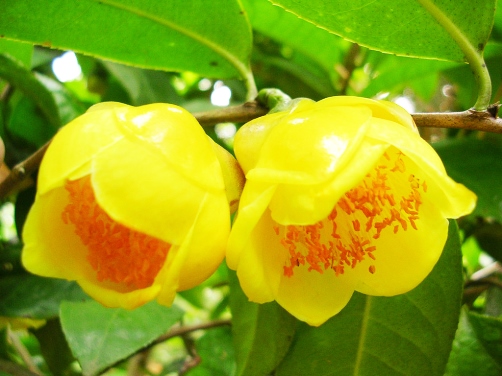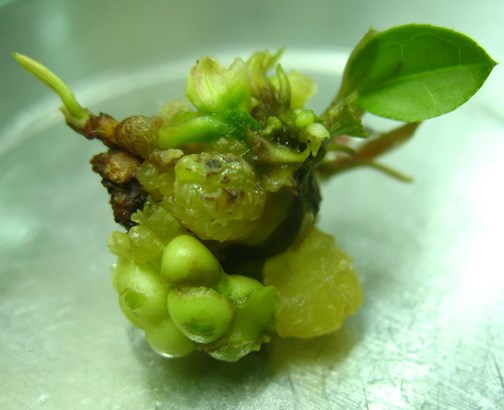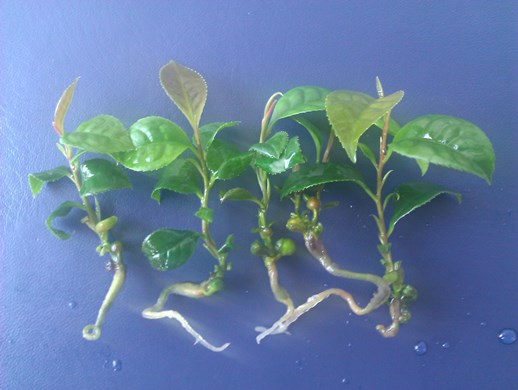

Camellia nitidissima Chi, an evergreen shrub or small tree with golden-yellow flowers, is a rare and endangered ornamental species. It is honored as “the Queen of Camellia” and “the Giant Panda of the Plant Kingdom”. Due to increasing anthropogenic pressure, deforestation and destructive collection of seedlings, its natural population size has declined greatly in recent decades, and it is now classified as a first grade endangered plant species in China. Despite a natural reserve in China having been assigned for the in situ conservation of C. niditissima, and despite weak attempts at mass propagation through more conventional methods of propagation, these efforts are far from being sufficient to conserve and widely utilize this rare and endangered species.
To address this gap, SCBG Biotechnology Breeding Group established of an efficient protocol for the high-frequency regeneration of C. niditissima via different pathways (shoot organogenesis, nodular embryogenic structures and somatic embryogenesis) from cotyledons excised from immature zygotic embryos. The results showed that three types of callus (whitish, reddish and yellowish) were induced from immature cotyledons on improved woody plant medium (WPM) with different plant growth regulators (PGRs). The nodular embryogenic structures could be sub-cultured and cyclically developed in one of two differentiation pathways: shoot organogenesis or somatic embryogenesis. Plantlets derived from shoot buds rooted and somatic embryos germinated when transplanted into soil in a greenhouse. Types of 6-benzylaminopurine (BAP) have significantly different effects on three types of regenerated structures. BAP was best for adventitious buds, zeatin was best for somatic embryogenesis, while Kt was best for the formation of NESs. These cultures could be an effective alternative method for the micropropagation in C. niditissima via shoot organogenesis, somatic embryogenesis or NESs subculture indirectly from embryogenic callus.
This research has been published in Journal of Plant Physiology (2013(170):1202-1211)and received grants from the National Natural Science Foundation of China (Grant Nos. 31100498, 31270720 and 30972295).




